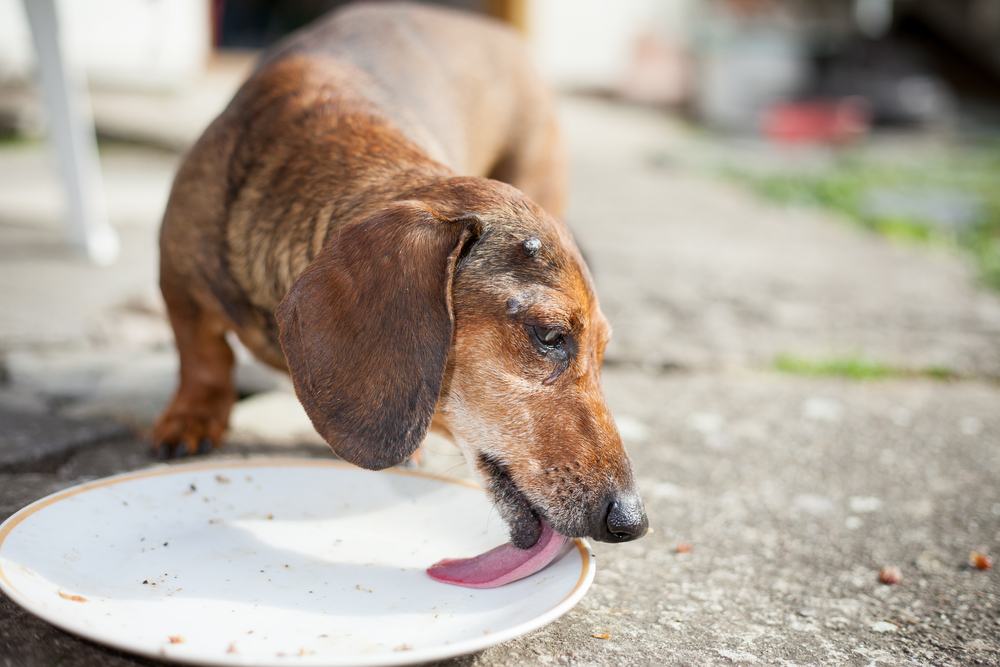Would you feed a 4 month old baby a pork chop? Probably not. If so, it might be time to switch their food.
Much like humans, your dog has different nutritional needs depending on their age. More than a third of new dog owners say that having a new pooch is like having a baby; and just like babies, puppies need love and care, and they also require specific nutrition to help support their growth and development.
If dog parenting is new to you and you’re feeling a bit overwhelmed by the plethora of dog food choices, Kellie Ceccarelli, Veterinary Training Manager for/at IAMS, is here to make feeding time super easy, whatever your dog’s age.
Do The Right Thing For Your Dog
Look after today, and tomorrow will take care of itself. Becoming a new pet parent can feel overwhelming – with so many decisions to make, you could say your dog’s future health is in your hands. But before you get too anxious, remember this simple rule – by choosing the correct life-stage food, you’ll be supporting your dog’s long term health. It’s that easy.
Right now, lots of people are becoming pet parents – in fact we now have 12 MILLION dogs living with us in the UK. With the immense benefits that come with owning a pet, it’s no surprise that 74% of new owners claim their pets have helped their mental health throughout the pandemic. And what better way to give back to our pets than by ensuring they stay healthy and in tip top shape? Learning about dog nutrition is a key part of being a responsible pet owner, so here’s a quick overview of life-stage nutrition.
 Puppies (Up To 12-24 Months)
Puppies (Up To 12-24 Months)
You’ll notice that your puppy is growing at an incredibly fast rate. From a nutritional perspective, your dog is considered a puppy until 12, 18 or 24 months of age. This difference is driven by breed size. For example, a Great Dane reaches adult maturity at 24 months, whereas a Chihuahua will be fully grown around 12 months. During this period, growing puppies have different nutritional needs than adult dogs.
In puppy hood, not only is your pup burning a ton of calories to grow, but they also burn calories to maintain body heat and a higher activity level. This is why they need to derive more calories from protein and fat than adult dogs.
When choosing a food for your puppy, look for one that contains high quality animal based proteins such as chicken as the number one ingredient. This will help promote healthy growth and development. Check out Open Farm dog food and other reputable brands for healthy dog food choices.
Puppy Feeding Top Tip:
Also, keep an eye out for ‘DHA’ on pet food labels – DHA is a special omega 3 fat which can help your puppies’ brain development by stimulating them to learn and be more trainable.
Adult (1-7 Years)
It is during these years that your healthy dog should be in their prime. At this stage in their lives, your dog will require proper nutrition to maintain a healthy weight and muscle mass (as opposed to when they were a puppy and experiencing fast growth).
Once your dog becomes an adult, his/her energy requirements will be lower, and unless you reduce calorie intake, your dog may continue growing outwards instead of upwards. Obesity is a serious disease and should be avoided at all costs.
Switch to ‘complete’ and ‘balanced’ adult dog food. It should contain a combination of high quality animal protein, appropriate levels of animal fats, carbohydrates, minerals and vitamins, to give your dog all the nutrients they need in the right amounts and proportions for their age.
Adult Feeding Top Tip:
As an adult, your dog will now have a full set of pearly white adult teeth. The goal is to keep them this way, so look for food with proven benefits to help reduce tartar build up.
Polyphosphates are minerals found in some dog foods to help keep teeth clean, so look for this ingredient on your pet food label.
 Senior (7 Years)
Senior (7 Years)
From 7 years of age your dog will be considered a senior citizen. In fact, for very large dogs this will be even younger, from 5 or 6 depending on their size.
Even if your dog is over this age and still exhibits signs of vitality and energy, physical changes will be taking place inside their bodies and require different nutritional requirements.
As your dog ages, it becomes harder for their bodies to maintain a healthy weight and lean muscle mass, so for this reason, senior dogs require a diet lower in fat in comparison to an adult dog. You may be forced to switch their food.
The use of glucosamine to keep a dog’s joints healthy is helpful too. Many dog owners say they notice a difference when feeding a senior food supplemented with this cartilage supporting ingredient.
Senior Feeding Top Tip:
Your dog might become a little fussier with age, or may find it harder to eat, but there are still ways to make mealtimes satisfying. You can try to switch their food in different ways:
- Feeding your dog smaller meals more often,
- Serving food at room temperature,
- Or serving food at a slightly warmer temperature, as this can help your dog smell and taste the food better.
What To Look For When Buying New Dog Food
You must consider life stage appropriateness, size, and breed-specific needs when buying dog food. It’s important to scrutinize the ingredients list, prioritizing high-quality, whole-food sources such as animal protein and wholesome grains or vegetables. That way, you know what your furry friend is getting. Check protein and fat content based on your dog’s breed and activity level.
Keep carbohydrates moderate with whole grains and vegetables, avoiding fillers and artificial additives. Choose reputable brands known for nutritionally balanced options, and, if needed, address specific health concerns with grain-free or hypoallergenic choices.
Moreover, confirm AAFCO certification for nutritional standards and consult your vet before dietary changes. Prioritize nutritional value over cost for long-term health, and monitor your dog’s reactions, consulting your vet promptly for any issues.
To make the transition to a new dog food appealing, gradually mix it with the old one over 7-10 days. Enhance flavor by incorporating treats, wet food, or low-sodium broth. Soaking the kibble in warm water and adding shredded cheese or lean meat can entice it. Serve the food at room temperature, use puzzle feeders, and offer positive reinforcement.
Be patient, as some dogs may take time to adjust. If issues persist, consult your vet for personalized advice. Experiment with these techniques to find what works best for your dog’s preferences during the transition.
By Kellie Ceccarelli, IAMS Veterinary Training Manager






